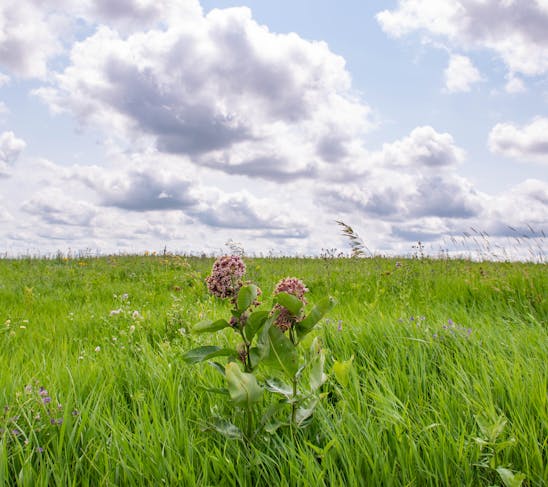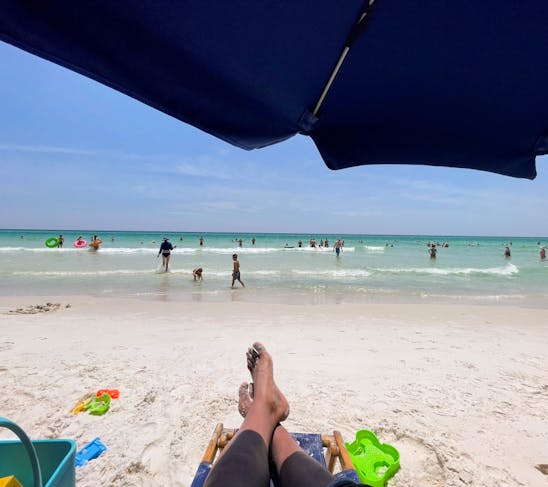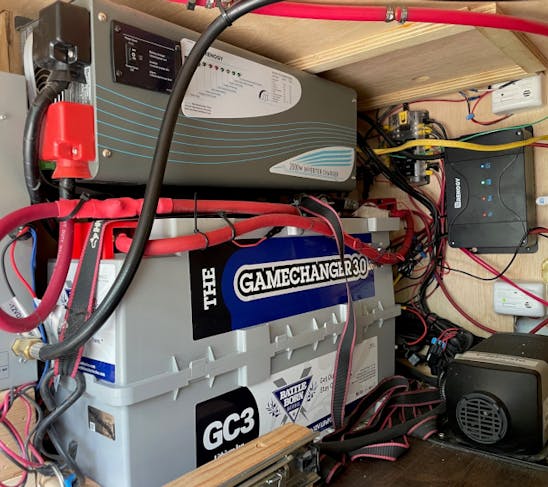It’s 1:30 a.m. on Saturday morning, June 6, 2015. I should be sleeping after trekking 14 miles across the beach and jungle, but I’m not. I’m wide awake, thinking about Corcovado and what else she may choose to reveal to me in the morning. Worst of all, I drank two and a half liters of water during yesterday’s hike, and though I have to pee like racehorse, I don’t feel like disrupting my mosquito net and risk having more creepy crawlers try to shack up with me for the night.
No luck so far on seeing a big cat, but the morning brings yet another day in this mysterious place, and my private guide has suggested we head out at 4:30 a.m. while it’s still dark. I don’t know how I feel about that idea—not after the wildlife we saw today…
My two-day journey started at 6:00 a.m. back on Carate Beach. Inside my backpack contained only the essentials: an extra pair of socks and underwear, long sleeved shirt, flip fops, mosquito net, bed sheet, inflatable pillow, raincoat, backpack cover, two dry bags, headlamp, extra chargers and basic toiletries like soap, deodorant and toothpaste. I also carried food: a couple of PBJ sandwiches, some Pringles and peanuts. In my Fannie pack was my Sony camera, binoculars, bug spray and sun screen.
I had planned this trip for several months. I was ready…so I thought. My guide’s name is Andrey, a 25-year old Costa Rican with knowledge of the local flora and fauna far beyond his years. He was calm and collective. I was excited and ready to go. Our first leg of the journey was a brief three-mile hike from Carate to Leona Ranger Station, the entry point into Costa Rica’s famed Corcovado National Park and 700 miles of pure unadulterated jungle. While at Leona, I removed my white synthetic shirt, which was already soaked through, and gave it a good ring before refilling one of my empty water bottles.

My first reality check of the potential dangers that lie ahead came when I looked at the wall and read instructions on what to do if you encounter a “feline.” “If the animal is approaching,” the sign says, “defend yourself and fight if the animal attacks.” Most importantly, “DO NOT RUN or turn around under any circumstances even if the animal is approaching…”
Once inside the park, we moved in and out of thick forest and rocky coastline for the next four miles. Our first interaction with wildlife was a group of spider monkeys dangling precariously from the tree limbs above, just as curious to see us as we were to see them. There are four species of monkey here in Costa Rica, and from largest to smallest, they include the spider, howler, capuchin or “white faced,” and the squirrel or “titi.” We saw them all.
Andrey then pointed to an unassuming banana leaf and told me to look underneath. I hesitantly moved closer, not knowing what I would find. Underneath were about 10 small tent-making bats, half of which took off as soon as they heard me approach. The bats surgically bite through the inside vein of the plant so that it folds down, providing a natural tent from the elements. Andrey said that bats make up the largest number of mammals here in Costa Rica with more than 100 different species. He then went onto say that bats disperse approximately 80% of all fruit seeds, with one bat alone capable of dispersing up to 2,500 seeds in one night.
Next, we lucked out and saw an endangered poison dart frog with bright orange stripes running down its back. Its discernable colors provide a clear warning to would be predators. The frog received its name because indigenous hunters were known to use the poison located on its back to tip their arrows and blow darts when hunting. As we moved back onto the beach, we came across a black hawk perched on a low-lying branch, sounding its territorial alarm with a scratchy call.

After five hours and approximately seven miles later, we stopped in a shaded area where the forest meets the beach and were joined by another guide and his two clients. Andrey proceeded to tell us the story of Alaskan Cody Dial, a 27-year backcountry expert who entered Corcovado last year by himself (it’s illegal to enter the national park without a Costa Rican guide). He supposedly paid a local to show him an entry point into the park, just outside the watchful gaze of the park rangers. He had revealed his plan to his father in an email just before he went in, and when his father later notified local authorities of his son’s plans, searches were launched and local guides were hired, including Andrey, to comb the jungle in search for their son, but neither his body nor any of his belongings were ever recovered.
Andrey said it’s very easy to disappear in the jungle. Anything could have taken the American’s life, maybe a venomous snake like the notorious bushmaster or fer-de-lance, or possibly even a pack of wild peccaries or “javelinas,” which best resemble what we would consider wild boars back in the U.S. They are known to travel in packs of 100 or more and are capable ripping a person limb from limb if perceived as a predator.
Andrey then said he was on a tour with a young American couple a few months back when they came across a pack of peccaries crossing a stream. He said there were a few of them standing guard while the others crossed. They started to come too close, so Andrey unsheathed his “Rambo” machete with his right hand and armed his left with a stick. He turned around and told the couple to quickly climb a tree. He immediately followed, and the three of them were forced to wait it out for more than two hours until the peccaries lost interest and finally moved on their way.
Being attacked by a pack of wild peccaries had never even crossed my mind. Andrey said you always smell peccaries before you see them because they have a strong oniony stench. I then asked him where he kept his machete in case of an emergency. With a smirk, he revealed its location. As for me, I had no knife. My only protection consisted of a tiny wooden cross that I had placed on the tomb of Jesus Christ when I visited Jerusalem two years earlier. Hopefully, I don't have to use it.
Follow me on Instagram at @Joshua_Maven or @HonchotheVan, on Twitter @MaventheRaven or Facebook at Facebook/TheLastImperial.
Pura Vida

Postcards to Samuel
It's 8:00 p.m. on Wednesday, July 31, 2024, and I'm trying something a little different with this post. Instead of my usual blog format, I compiled a series of postcards that I wrote to my 10-month-old son, Samuel, during a two-week road trip I recently took to the Great Lakes. I plan to give him these postcards, along with others from future trips, when he's older in hopes that they will inspire him to chase his own dreams, whatever those might be.

False Summit
It’s 12:00 p.m. on Sunday, July 30, 2023, and I’m lounging at the beach enjoying the white sands and green waters of Florida’s Emerald Coast. Today is my 40th birthday and a relaxing getaway is exactly what I needed after a two-week road trip out west, where I hiked the highest peaks of Colorado and Arizona. The reasoning behind my latest excursion was simple: if I’m going to be “over the hill,” then I might as well be standing on top of a mountain.

Recharged
It’s 2:00 p.m. on Friday, Sept. 16, 2022, and I’m resting inside Honcho—my van—at the Taos Ski Valley Resort after successfully hiking Wheeler Peak, New Mexico’s highest point. I made the long drive west for a much-needed mental health getaway in nature. That, and it was a good excuse for me to test a new house battery I had installed the week before. Needless to say, my lungs and legs are physically exhausted after my 13,000-foot climb this morning, but the satisfaction that comes from summiting another mountain is just the feeling I was looking for.

